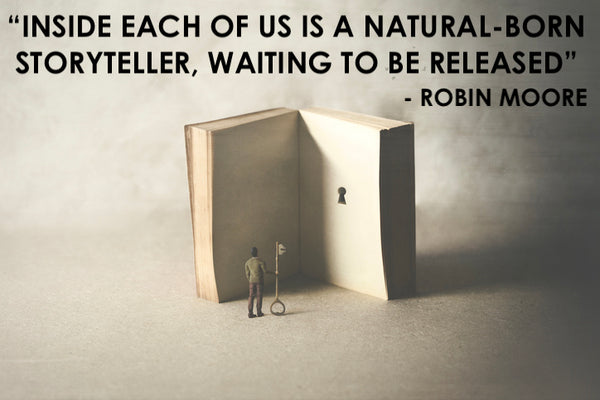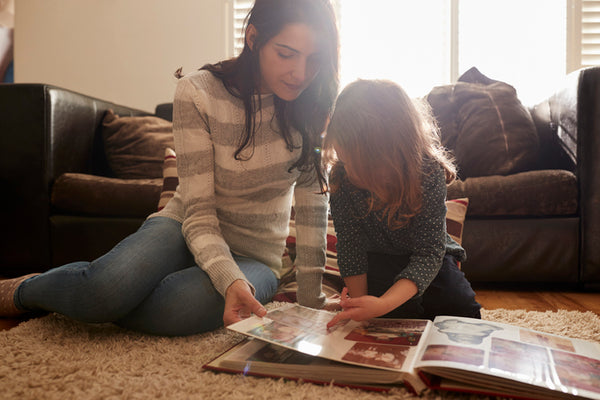Find out why teachers and school leaders love PlanBee
Find out why teachers and school leaders love PlanBee

Storytelling is an in-built human trait and one that has existed since humans first roamed the Earth. Being able to tell your children stories is not only a great bonding experience but also a fantastic way to develop their early literacy and emotional skills. So here are our top storytelling tips for parents, carers and anyone else who wants to share the magic of stories with the children in their lives.

Whatever story you’re telling, your tone of voice is crucial both in helping your children to understand the story and in keeping them engaged. Use your voice to convey emotions in the story. You can do this by:
Another good idea is to use different voices for different characters within your story. This will help your children to differentiate between all the different people and can also help them visualise the characters more effectively.

Stopping to ask your child questions as you are reading or telling a story can help keep them engaged and ensure that they are following the plot. Encourage them to answer questions both about what is happening and how they feel about what is happening throughout the story.
Children will often stop and comment or question events for themselves. As frustrating as this can be for the storyteller, it’s a good idea to encourage this so that children feel engaged and included in the storytelling process.
Another great way to help your children feel involved in the storytelling process is to tell them stories that include repeated phrases or rhymes that they can join in with (think, the Three Little Pigs - “I’ll huff and I’ll puff and I’ll blow your house down!”)
You can, of course, create your own repeated phrases if you’re telling your own story, but some other great examples include:

Tell stories with repeated phrases so your child can join in
If you want to tell your own stories but are lacking in inspiration, you can start with familiar stories as the basis and change details to further engage your children. Try adding your child’s name as a character in stories like Aladdin, The Little Mermaid or even Thomas the Tank Engine or Bob the Builder.
Or take a traditional tale and change the setting and/or characters to give it a fresh twist. Why not turn Snow White into a cat who has to run away from the evil cat queen and finds herself living with a group of seven friendly squirrels.
Don’t be concerned about the literary quality of your stories – the more ridiculous the better (at least according to most kids out there!).
Don’t limit yourself to fiction. Your own childhood or pre-children life can be a great source of inspiration for stories that your children will love hearing. You may, of course, embellish or leave certain details out but don’t underestimate the power of your own stories.
You could also try telling your children stories about when they were babies or very young children. Most children love hearing funny stories about themselves. Again, you don’t have to limit yourself to the absolute truth – start with a funny event and embellish it.

Use a family photo album as a starting point for telling stories about your own experiences
After a long day at work, sometimes the very last thing your brain wants to do is conjure up intricate plots and fascinating characters for a bedtime story. Instead, why not try some story prompts to get you started. There are tons of story generation tools and resources online, like this Roll and Write Story Ideas Generator. Ask your child to roll the dice to generate the basic plot for that evening’s story.

Download and use free story idea generators when you're stuck for an idea
There are tons of fantastic wordless picture books out there that are perfect to encourage oral storytelling. Use the pictures to tell the story and encourage your children to get involved too. Describe the setting and the characters, and make up what you think the characters are saying. Do they agree with your version of what is happening? Can they come up with their own version?
Some great examples of wordless picture books include:
If you would like to read more about wordless picture books, then make sure you read our wordless picture books blog.
Story time does not have to be reserved for the ten minutes before bed. Get into the habit of telling a story on the way to school, waiting in the dentist’s office, while you’re eating dinner. The more you incorporate storytelling into your children’s daily lives, the more beneficial it will be.
A quick story can be as simple as picking out someone from the crowd and telling your children all the fantastical things they did they day, or spotting a caterpillar and telling the story of how it will soon become a beautiful butterfly. You don’t need to make time for those grand, sweeping epics every day (although I would recommend them once in a while) – a good tall tale or quick five minute yarn will work just as well!

Tell stories whenever you have a spare few minutes with your children
I hope you've found those tips helpful. Just remember, the more stories your child is exposed to (in any format) the better. Use your local library to regularly swap out your books (and avoid every parent's nightmare of re-reading the same book a gazillion times) and find stories in the every day. Both you and your children will be so glad that you did.
Leave a comment